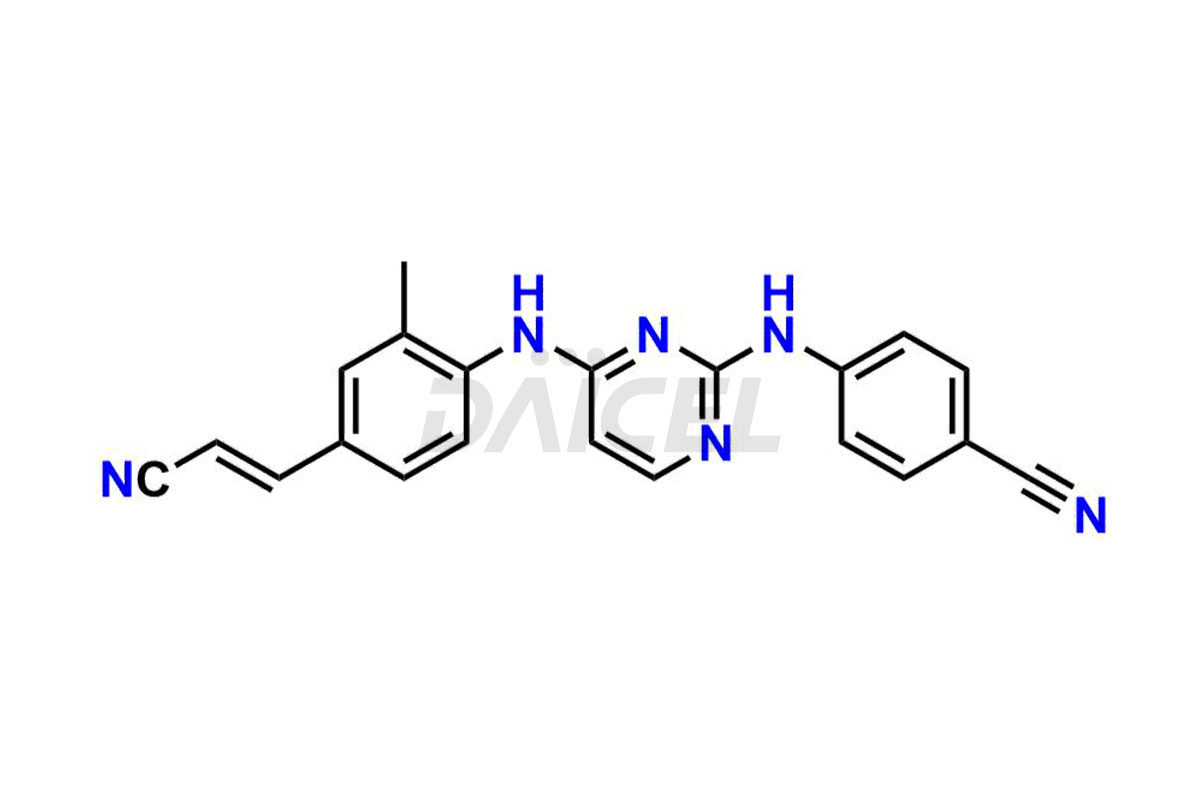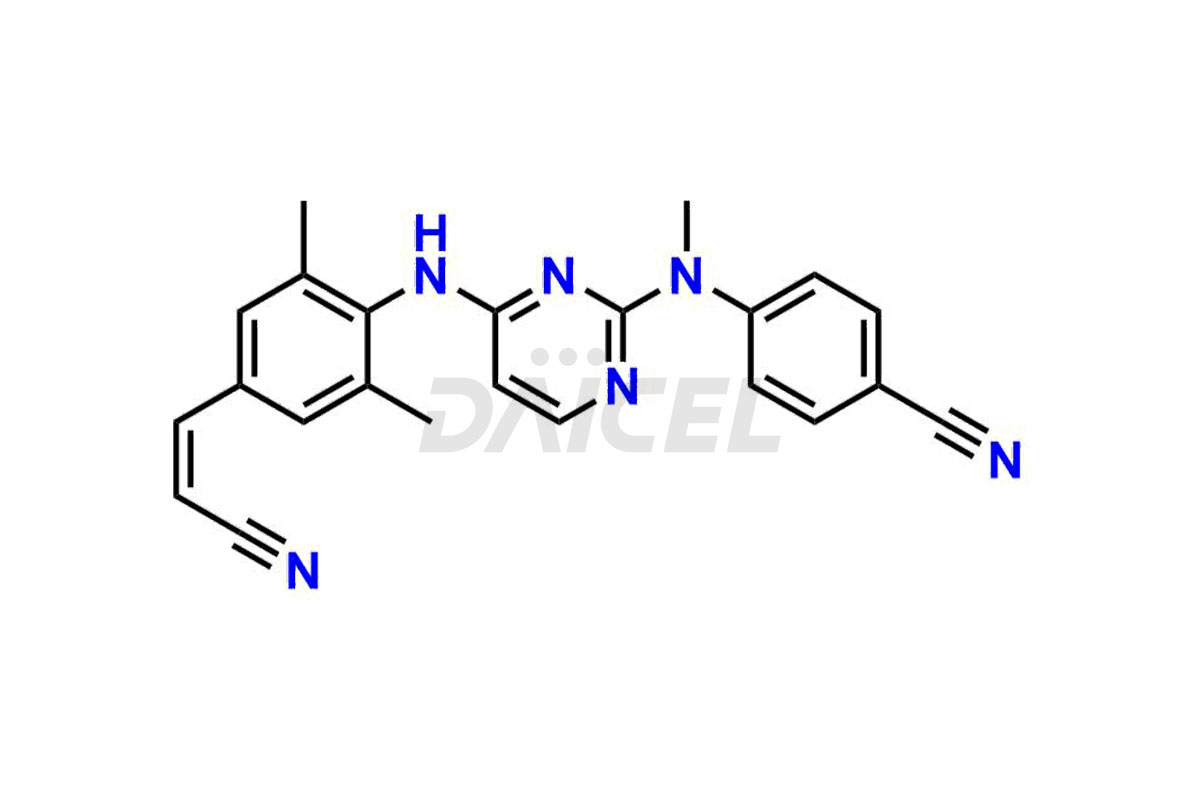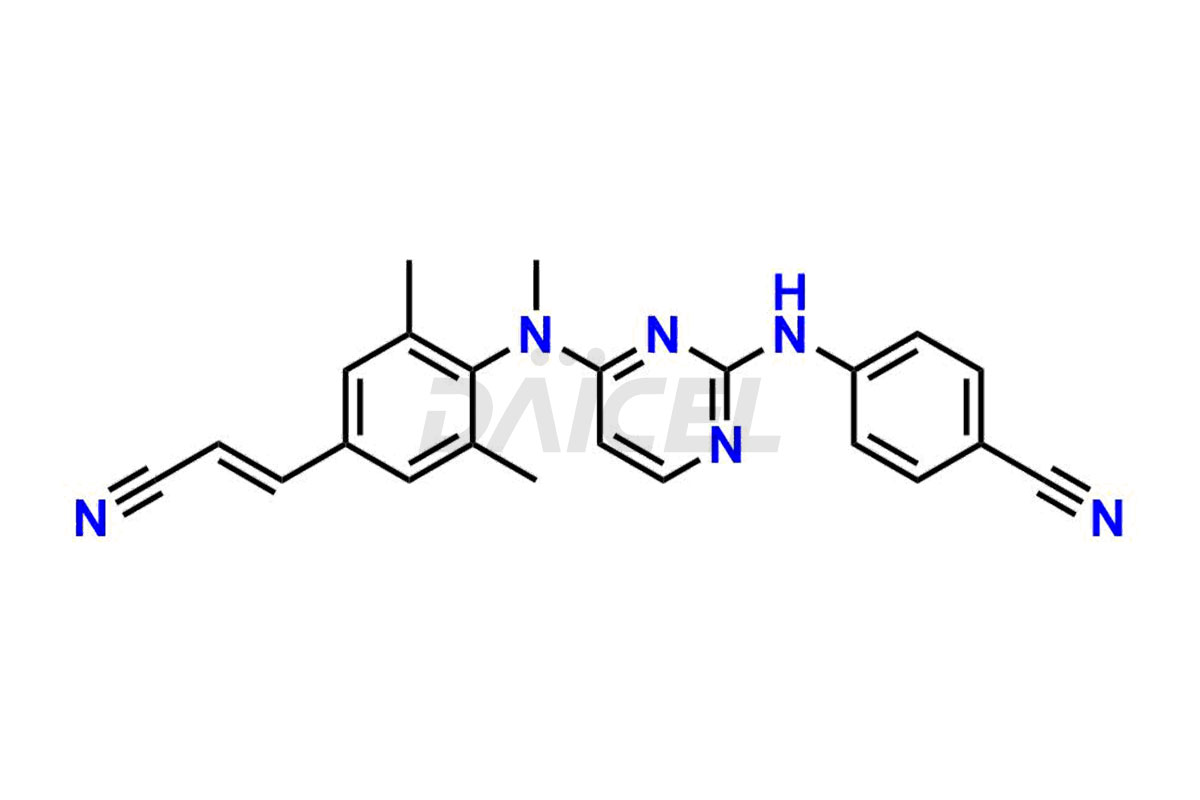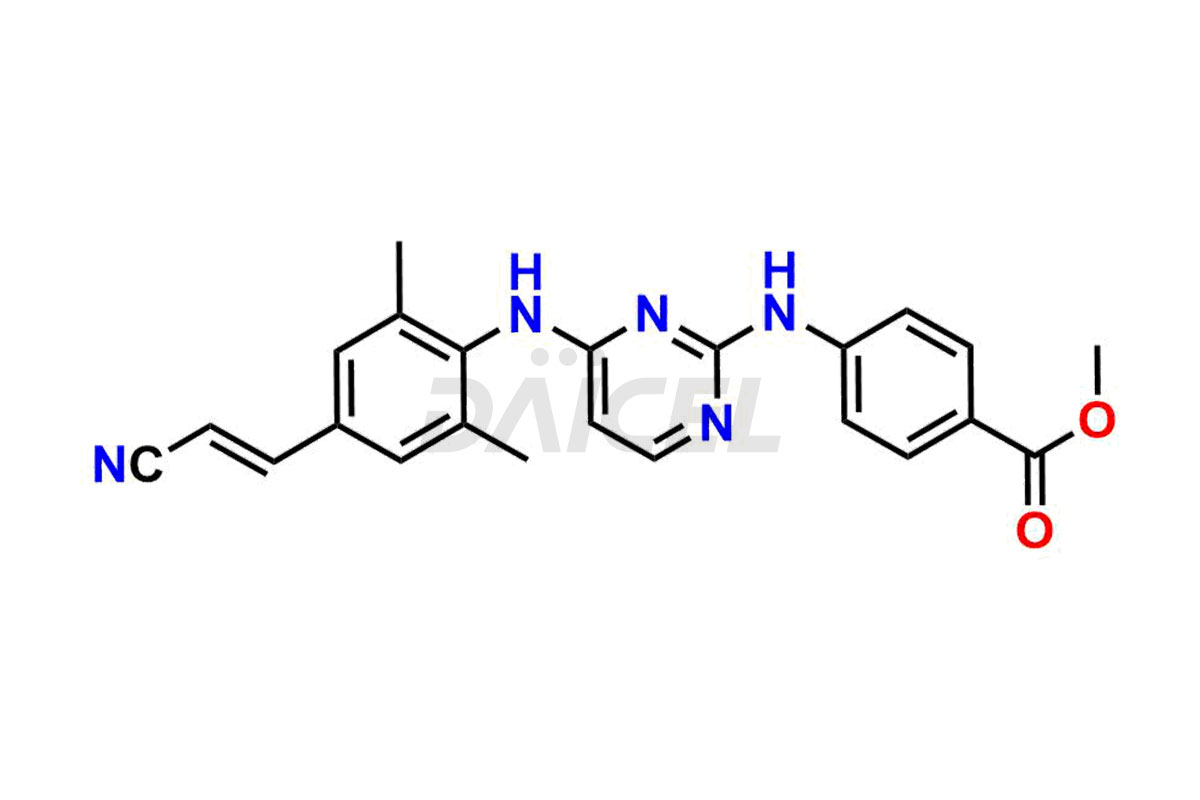Rilpivirine
General Information
Rilpivirine Impurities and Rilpivirine
Daicel Pharma offers Rilpivirine impurity standards which are Rilpivirine Impurity 2, Rilpivirine Impurity 3, Rilpivirine Impurity 4, Rilpivirine Impurity 6, Rilpivirine Amide Impurity-1, Rilpivirine Amide Impurity-2, Rilpivirine Desmethyl Impurity, Rilpivirine Impurity 6 – Z Isomer, and Rilpivirine Methyl Ester Impurity. These impurities are essential for Rilpivirine quality, effectiveness, safety, and stability. Moreover, Daicel provides a custom synthesis of Rilpivirine impurities and delivers them globally.
Rilpivirine [CAS: 500287-72-9] is an aminopyrimidine that treats HIV infection.
Rilpivirine: Use and Commercial Availability
Rilpivirine with antiretroviral agents treats HIV-1 infections in antiretroviral treatment-naive patients. This medication is available in the market under the tradename of Edurant.
Rilpivirine Structure and Mechanism of Action 
The chemical name of Rilpivirine is 4-[[4-[[4-[(1E)-2-Cyanoethenyl]-2,6-dimethylphenyl]amino]-2-pyrimidinyl]amino]benzonitrile. Its chemical formula is C22H18N6, and its molecular weight is approximately 366.4 g/mol.
Rilpivirine blocks HIV-1 replication by non-competitive inhibition of HIV-1 reverse transcriptase.
Rilpivirine Impurities and Synthesis
Rilpivirine impurities are unexpected chemical substances that could appear during the production1 or storage of the antiretroviral drug, Rilpivirine. These impurities may come from different sources, such as raw materials, reagents, steps in the process, or degradation products. Rilpivirine impurities require strict control and monitoring to assure drug safety, efficacy, and quality analysis, and analytical procedures help identify, quantify, and characterize these impurities.
Daicel Pharma offers a Certificate of Analysis (CoA) for Rilpivirine impurity standards which are Rilpivirine Impurity 2, Rilpivirine Impurity 3, Rilpivirine Impurity 4, Rilpivirine Impurity 6, Rilpivirine Amide Impurity-1, Rilpivirine Amide Impurity-2, Rilpivirine Desmethyl Impurity, Rilpivirine Impurity 6 – Z Isomer, and Rilpivirine Methyl Ester Impurity. Our cGMP-certified analytical facility provides a comprehensive CoA with detailed characterization data like 1H NMR, 13C NMR, IR, MASS, and HPLC purity2. Additional characterizations like 13C-DEPT are available upon request. We offer Rilpivirine impurities and degradation products.
References
FAQ's
References
- Guillemont, Jerome Emile Georges; Palandjian, Patrice; De Jonge, Marc Rene; Koymans, Lucien Maria Henricus; Vinkers, Hendrik Maarten; Daeyaert, Frederik Frans Desire; Heeres, Jan; Van Aken, Koen Jeanne Alfons; Lewi, Paulus Joannes; Janssen, Paul Adriaan Jan, HIV inhibiting pyrimidines derivatives, Janssen Pharmaceutica N.V., Belgium, EP1419152B1, July 27, 2011
- Masthanamma, S. K.; Gottumukkala, Alekhya, Development and validation of UV spectrophotometric methods for estimation of rilpivirine in bulk and pharmaceutical formulation, International Journal of Pharmaceutical Sciences and Research, Volume: 5, Issue: 2, Pages: 483-489 2014
Frequently Asked Questions
Are there specific Rilpivirine impurities that can interact with other medications or substances?
Rilpivirine impurities may have the potential to interact with other medications or substances.
What measures are taken during the manufacturing process to minimize the formation of Rilpivirine impurities?
Stringent manufacturing processes and quality control measures, like careful selection of starting materials, optimized reaction conditions, and purification techniques, help minimize the formation of impurities during the manufacturing of Rilpivirine.
Can the presence of Rilpivirine impurities lead to variations in its pharmacological effects or patient response?
Rilpivirine impurities can cause variations in its pharmacological effects or patient response.
What are the temperature conditions required to store Rilpivirine impurities?
Rilpivirine impurities should be stored at a controlled room temperature between 2-8°C or as indicated on the Certificate of Analysis (CoA).
Note: Products protected by valid patents by a manufacturer are not offered for sale in countries having patent protection. The sale of such products constitutes a patent infringement, and its liability is at the buyer's risk.










